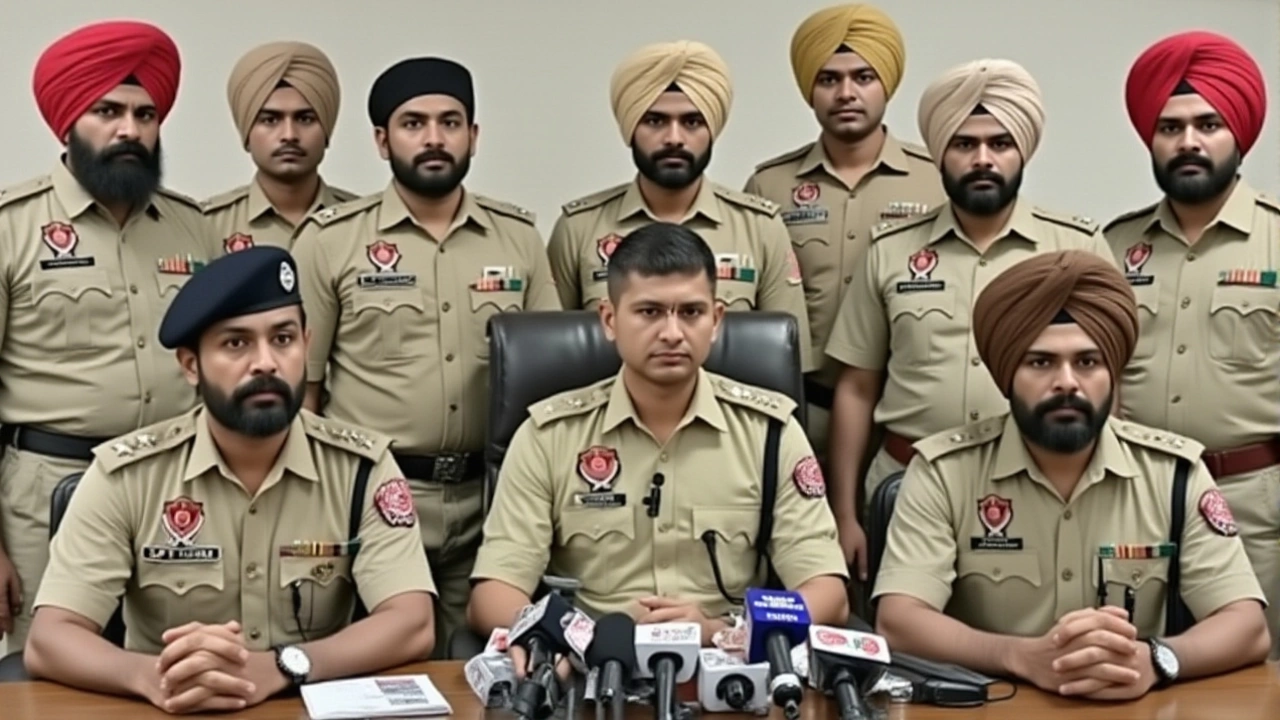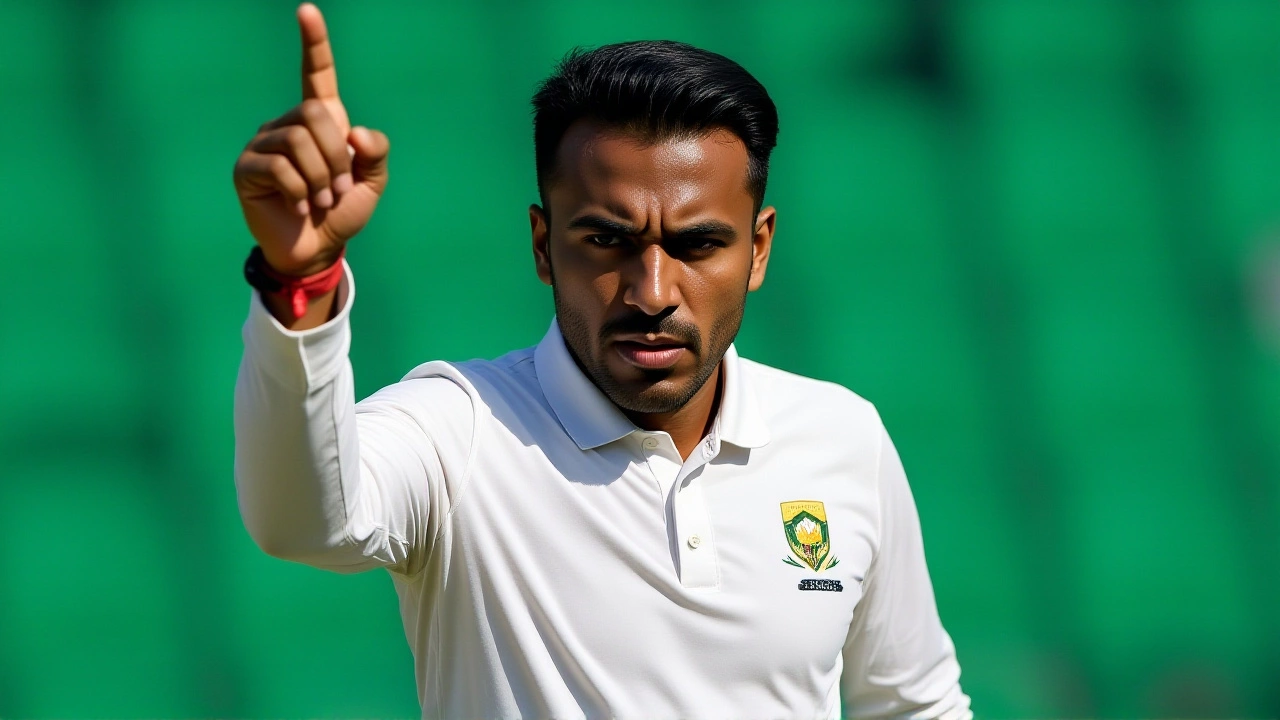On November 21, 2023, Usman Shinwari, the 31-year-old left-arm fast bowler, officially stepped away from international cricket — not with a final over in a packed stadium, but with a quiet statement that carried the weight of six years of silence. His career, once flickering with promise, was defined not by longevity, but by brilliance cut short: two ODI five-wicket hauls against Sri Lanka, a lumbar spine fracture that never fully healed, and the slow, painful fade from Pakistan’s fast-bowling plans. The Pakistan Cricket Board confirmed his retirement, ending a journey that began with a 5-for in a domestic final and ended with a five-wicket haul in the Pakistan Cup just weeks ago — his final List A performance.
A Meteoric Start, a Broken Back
Shinwari didn’t climb the ranks — he was catapulted. At 19, he took 5 for 9 in just 3.1 overs for Quetta Region in the 2013 departmental T20 Cup final. That performance, against a side captained by Misbah-ul-Haq, was enough to land him in Pakistan’s T20I squad within weeks. He made his debut on December 25, 2013, in Dubai, bowling one over against Sri Lanka for nine runs. No wickets. But it didn’t matter. The raw pace, the left-arm angle, the aggression — it all screamed future star. His breakout came on October 18, 2017, at the Sharjah Cricket Stadium. In his second ODI, he ripped through Sri Lanka’s batting order for 5 for 34 in 10 overs. Five wickets in 21 balls. The crowd rose. The pundits took notice. And then, in the very next series, his back gave out. A stress fracture in his lumbar spine. He missed 18 months. Came back. Took another five-for — 5 for 51 — at the National Bank Stadium in Karachi on September 27, 2019. His penultimate ODI. His last international highlight.The Slow Fade
His Test debut came just two months later, on December 11, 2019, in Rawalpindi. He became Pakistan’s 240th Test player. He bowled 22 overs. Took one wicket. Then, he was sidelined with typhoid. Never selected again. The injury bug didn’t stop. By 2020, the spine fracture returned. He couldn’t train properly. Couldn’t bowl at pace. Couldn’t hold a position in domestic squads. In November 2021, he announced he was quitting red-ball cricket — a pragmatic move, he said, to preserve his body for limited-overs. But even there, the door closed. The selectors turned to Shaheen Shah Afridi, then to Haris Rauf, then to a new generation of left-armers who could bowl 140+ kph without crumbling under their own weight. Shinwari’s numbers tell a story of wasted potential: 34 ODI wickets at 18.61, 13 T20I wickets, 1 Test wicket. His economy rate in ODIs? A stingy 4.72. He wasn’t just effective — he was economical. And yet, he vanished from the national picture.
Domestic Echoes and Franchise Footprints
He kept playing. For Quetta, for Peshawar, for the Pakistan Super League (for three different franchises), for the Lanka Premier League, and even for the Melbourne Renegades in the 2018-19 Big Bash. He was the quiet professional — never flashy, never loud, just there, doing his job. In the 2023 Pakistan Cup, he took 5 for 41 against Peshawar. His last wickets. His final flourish.What Led to This?
Cricket analyst Ramiz Raja put it bluntly: “Shinwari had the skill. He had the aggression. But injuries robbed him of consistency — and consistency is what selectors need.” He wasn’t just unlucky; he was caught in the crossfire of Pakistan’s fast-bowling evolution. When Shinwari was sidelined, the team needed someone who could bowl 15 overs a day, 40 overs a week. He couldn’t. The modern game demands durability. He gave everything he had — but his body simply couldn’t keep up. His retirement follows that of batter Asif Ali, who stepped away just four days earlier. Two veterans, both 30-somethings, leaving the same team within a week. A quiet end to an era.
What Comes Next?
Shinwari says he’ll focus on coaching and mentoring young fast bowlers in Punjab. He’s already begun working with academy players in Lahore. “I want them to avoid what I went through,” he told reporters. “Don’t push through pain. Don’t ignore the signs. Your body tells you when it’s done — listen.” The PCB hasn’t announced any formal tribute. No farewell match. No ceremony. But in the dressing rooms of domestic teams, his name is still spoken with respect. He was the bowler who could swing it late. Who could bowl yorkers on a worn pitch. Who, for a brief moment, looked like Pakistan’s next great left-arm weapon.Frequently Asked Questions
Why didn’t Usman Shinwari play more Tests despite his ODI success?
Shinwari’s lone Test came in December 2019, and he was immediately sidelined by typhoid. His recurring back injuries made him unsuitable for the physical demands of multi-day cricket. Pakistan’s selectors prioritized bowlers who could bowl long spells — a role Shinwari, due to his injury history, simply couldn’t fulfill. He was an ODI specialist by necessity, not choice.
How did his two five-wicket hauls compare to other Pakistani left-arm bowlers?
Only three Pakistani left-arm bowlers have taken multiple ODI five-wicket hauls: Shinwari, Imran Khan, and Mohammad Sami. Shinwari’s 5 for 34 in Sharjah remains the best bowling figures by a Pakistani left-arm bowler in a single ODI innings since 2000. His strike rate of 12.2 in that match was among the most destructive in ODI history for a debutant five-for.
What impact did his injuries have on his career trajectory?
The 2017 lumbar fracture forced him out for 18 months, and the 2020 recurrence ended any chance of a comeback. He missed three major tournaments — the 2019 World Cup, the 2020 T20 World Cup qualifiers, and the 2022 Asia Cup. Without those windows, he lost his place to younger, fitter bowlers like Shaheen Afridi and Naseem Shah, who were already rising through the ranks.
Did Shinwari ever get a chance to return after 2020?
Yes — he was named in Pakistan’s 2021 ODI squad for the series against Sri Lanka, but was withdrawn due to a flare-up of his back injury. He played domestic cricket in 2022 and 2023, but his pace dropped from 140+ kph to 128–132 kph. Without the speed, his effectiveness faded. The selectors moved on.
What’s his legacy in Pakistan cricket?
Shinwari’s legacy is one of potential unfulfilled — but also of excellence under adversity. He delivered two of the most memorable spells by a Pakistani left-arm bowler in the last 20 years. His career reminds us that talent alone isn’t enough; durability matters. He’ll be remembered not for how long he played, but for how brightly he burned in those short, brilliant bursts.
Will he be honored by the Pakistan Cricket Board?
The PCB has not announced any formal recognition, but sources within the organization confirm discussions are underway to include Shinwari in a future ‘Veterans’ Day’ event. His contributions to domestic cricket and franchise leagues are acknowledged, and he may receive a ceremonial cap or a plaque — not for his stats, but for his grit.




